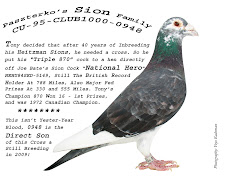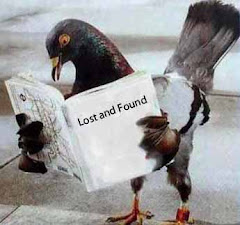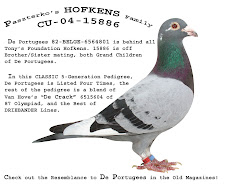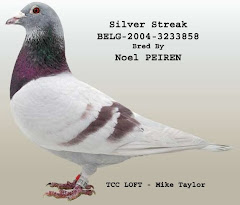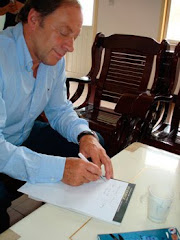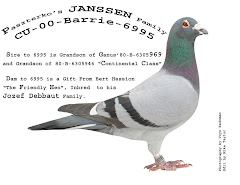A few years ago, Tony Paszterko gave me an old photocopy of an article written by Gilbert A. Rinard. I do not know who published the article, and therefore can't give them credit. However as you will see, this article deserves to be published again. Note how Gilbert captures the long distance spirit that Charles Heitzman had a passion for.
By Gilbert A. Rinard, Ph.D.
3188 Lindmoor Drive
Decatur, Georgia 30033
Colonel Charles Heitzman of Jeffersontown, KY, has become famous as a breeder of high quality long distance racing pigeons. In addition, he is the author of four books on racing pigeons: one stud book each on the Sion and Stassart strains, a book on loft design and a book on young bird training. These writings have been very useful to racing pigeon men everywhere, yet, they just begin to scratch the surface of Colonel Heitzman's experience.
He has had success at every distance, but he has always concentrated on the 500 mile races and it is here that he has scored consistently and most noticeably. His stud books are full of 500 mile winners which he bred and flew himself. Unfortunately, his methods of training for the long races have not been presented in any of his published writings. Early in 1973, I made arrangements to visit Colonel Heitzman and discuss some of his experiences flying the long races over the years.

My visit was in June and the Kentucky countryside was a lush green. The day was sunny and hot, but a brisk breeze was blowing so that as we sat in the shade surrounded by pigeons and lofts it was quite pleasant. We had just completed a partial tour of the lofts and three of the many fine birds we inspected stand out in my mind.
HEREFORD is a red check Sion cock that won first diploma, 319 mile yearling race, and first diploma, 500 miles, before being retired to become an outstanding stock bird. He was mated to a younger blue hen this year and at the time of my visit there were two fine looking silvers in the nest bowl. This bird is 14 years old and still "flys around here like a yearling" to quote my host.

HEI LeROI is a blue check Sion hen that is 13 years old and is in beautiful condition and still laying. She also was a fine 500 miler. HIS TWIN is a blue check cock, mostly Stassart with some Sion from FALCONESS and Bastin from VINDICATION crossed in. FALCONESS, AU 27 HUB 1273 Bl Ch H., Sion was bred and flown by L. F. Curtis, a great flyer and stock hen, was one of the six pigeons Mr. Curtis clocked 600 miles day of toss to take the first six positions in the Greater Boston Concourse, which performance won the AU Hall of Fame Award, 1930.


VINDICATION, WSC 31 B 3491 Red Check Cock, Bastin, bred and flown by John Mahaffey, a great flyer and breeder, won the Great Eastern Championship Race and Philadelphia Club Championship race, 500 miles, day of toss, which performance won the AU Hall of Fame award, 1934.
Colonel Heitzman's HIS TWIN is one of the three brothers that were the best racers which Mr. Heitzman ever flew. He was a winner from 500 miles more than once including when he was clocked at dark after flying 14 1/2 hours to be the only day bird, winning the race. He is 17 years old and still fertile. A special aviary had been built in front of his nest box to assure his fertility and the purity of his young.
It certainly took an effective combination of breeding and training to produce birds and performances like these, so let's get on to the meat of this article and look at some of the training methods used.
Pre-race Training
Colonel Heitzman would begin training his OBs about five weeks before the first race which was 117 miles. With the schedule his club flew at the time this was nine weeks before the first 500 mile race. He would begin with two tosses. This series would be spread out over two to three weeks allowing one to three days rest between each of the tosses over 30 miles.
Regular Weekly Routine
Once the birds had been reconditioned from the winter inactivity the backbone of the training routine was a toss, once a day, for four or five days a week, going 75 miles once or twice and 30 miles the other times. He feels it is best to double-toss the birds but concedes that he did not always have the time to do this and most fanciers do not have the time either.
Setting Up a Hen for the 500
Colonel Heitzman prefers to send his hens to a long race sitting ten to twelve days. His club schedule was to fly the first race from 117 miles, one week later fly 220 miles, the next week fly 319 miles, skip a date and then fly the 500 four weeks after the first race, nine weeks after beginning OB training. He would send his hens to the 117 and 220 mile races sitting the same pair of eggs. Then when they returned from the 220 mile race the eggs were removed and the laying cycle was restarted so that three weeks later they would be sitting ten to twelve days at the time of the 500.
For the benefit of the novices let's take an example with specific dates. Assume the first 100 mile race is on April 1 (as it is here in Atlanta). Five weeks before, on February 25, or so, is the date to begin training with 15 mile tosses. In order to send to the 100 and 200 sitting the same set of eggs the hen should lay on March 24, eight days before the 100. Since a hen will normally lay eight to ten days after mating she should be mated March 14. If she is to rear a round of youngsters before the races she must be mated about February 2 or 3. She would lay eight to ten days later about February 12.
The eggs would hatch 19 days later on March 3 and she should lay again when the young are about 17 to 21 days old or about March 22. She would go to the 100 sitting eight to ten days and the 200 sitting 15 to 17 days. After returning from the 200 her eggs would be removed and she would lay again about April 12 and would fly the 500 sitting ten to twelve days.
Now let's back up and see how the training schedule fits in with the breeding program. On February 25, our target date for beginning training, five weeks before the first race, the birds will be sitting about 13 days. I would be tempted to start tossing a few days earlier, if the weather is good, because it is easier to work around the problems of training both members of a pair, if they are on eggs, than if they have small youngsters.
The weather will be cold in most parts of the U.S. five weeks before the first race and it is not wise to leave eggs to chill while both parents go on a training toss if you have any hopes for the youngsters.
There are several ways to work around this problem.
1) Train cocks and hens on separate trips. This has obvious advantages and disadvantages. 2) Remove the eggs to an incubator and give the birds pot eggs while training, then give them back their own eggs prior to hatching. 3)Transfer the eggs to stock birds to keep warm while the flyers are gone.
A sitting bird can incubate four eggs, her own and two from another pair. If you use the latter two methods you must be sure to label the eggs carefully and make sure they don't hatch in the wrong place! A little hint, label the eggs on the ends with pencil because the ends get less friction when the bird turns the eggs in the nest and the label will last longer.
It should be possible to schedule two 15 mile tosses and two 30 mile tosses before the eggs hatch. Since the hens will be laying their second pair of eggs about March 22, there will be a little more than two weeks left during which the birds will be on youngsters and must also be sent to two 50 mile tosses and two 75 mile tosses. It will be necessary to send cocks and hens separately to avoid chilling the youngsters if they are to be kept and raised. Of course, the hens must not be sent during laying (March 22) and the few days preceding it.
If the birds are coming on a good straight line and can be expected to do 30 miles in 45 minutes or so, the hens can be sent to 30 miles one or two days after laying their last egg. However, if there is a chance that it will take them an excessive time to do the 30 miles it is better to hold the hens a few days longer rather than take a chance on making they fly too long right after laying.
The hens will be shipped to the 100 and 200 sitting and being trained 30 miles a day for four to five days a week. After returning from the 200 their eggs will be taken away and a new laying cycle will start. Two or three 30 mile tosses can be given at this time but as the date for laying approaches the hens must be left at home. The 30 mile tosses will be resumed one or two days after the hen lays her last egg. She should also go to 75 miles once or twice before being shipped to the 500 sitting on ten to twelve day old eggs.
Setting Up a Cock for the 500 Mile Race
The preferred nest position depends on the particular bird in question. Colonel Heitzman said that HIS TWIN flew best feeding a big youngster while his brother, HEI TIME, was an egg sitter. If HIS TWIN didn't have a youngster of his own to feed he would sometimes place one under him. Colonel Heitzman could give him a big youngster and he would adopt it and feed it.
HEI TIME was so keen on his eggs that he would fight very hard to protect them. He could peck your hand so hard that it would draw blood. This trait was inherited from the old cock, IBRAHIM, that was such a great flyer for Stassart.
Colonel Heitzman purchased IBRAHIM from Mons. Stassart and the father of both HIS TWIN and HEI TIME was HEAD WIND that was linebred to IBRAHIM.
One of Colonel Heitzman's favorite procedures was to send a bird to the 300 mile race two weeks before sending it to the 500. This was easier with cocks than hens because the hens would be laying at this time, but the cocks could be managed so that they were ready to go at the required times. For example, you could set the cock up to go to the 100 just calling his hen, skip the next week when he might be driving hard to nest, then send him to the 300 sitting four to six day pot eggs and send him to the 500 sitting overdue to hatch. This would be for a cock that flys best to eggs.
If the cock flys best to a big youngster set him up to go to the first 100 sitting 15 day eggs, then to the 300 on a ten day old youngster and two weeks later to the 500 feeding a big 24 day old youngster. If the soft food doesn't bother him he can go to the 200 in between the 100 and 300 feeding a small youngster. All this time the bird will be getting his 30 mile tosses plus 75 once in a while.
Recuperation from a Hard Race
Colonel Heitzman was especially careful with his pigeons when they returned from a long, hard race. He would prepare lukewarm water with honey in it for them to drink. This would provide a source of glucose sugar which would be rapidly assimilated and speed up the recuperative processes. The bird would be fed a mixture of pellets and rice and small seeds that are more easily digested than the larger corn and peas. Of course, he allowed the bird to rest and delayed sending it on any training tosses until it was ready.
Teaching the birds to fly late into the evening and get up early in the morning
Many long distance races are won by birds that are clocked late in the evening. Colonel Heitzman recommends special training tosses, in which the birds are released late in the afternoon to accustom them to flying and trapping in the twilight. He had floodlights opposite his loft traps and on the long races, he would turn these on as darkness began to come on.
He has clocked many winners in the twilight or even dark. With his training routine using many tosses from 30 miles the birds would become very dependable as to just how long it would take them to home from that release point. This was helpful in setting the exact time in the evening that the birds should be released to get them home at the desired time.
The exact time that a bird stops flying in the evening and starts flying again in the morning is very critical to the outcome of two day races. Just as he recommends late evening tosses to teach them to fly into the twilight, he also recommends early morning tosses to teach them to get up early on the second morning.
The Question of the age of the pigeon and Long Distance Races
Colonel Heitzman has bred and trained many YB and yearling 500 mile winners. I asked him if he thought it hurt a pigeon to fly it out to the long distance at a young age. He said "No" and cited as proof his Sion hen, HEI-WHITE, AU 59 KY 59027, RW/F Spl, flown 115, 150, 319, 500 miles as a YB; 115, 150, 319, 500 miles as a yearling winning equal first at 500 when there were only three day birds in the club, all three homing together to the Heitzman loft at dark.
In 1961 she flew 100, 150, 319, 500 miles, and twice 500 miles in 1962. In '63 she won first and trophy at 500 miles and she flew 500 miles twice in 1964. She flew 500 miles a total of eight times and she flew it first as a young bird.

Even though he believes it doesn't hurt a pigeon to be flown out to the long distances as a YB, he still advises the beginner who is trying to establish a loft to stop his good YBs at 150 or 200 miles and stop his good yearlings at 300, citing the increased risk of losing the younger bird due to lack of experience. He said that Mons. Stassart used to scold him for sending some of his yearlings to 500 and 600 miles, but, in rebuttal, he points to his many successes with yearlings at the long distances.
Colonel Heitzman is very clear in his insistence that racing pigeons should not be liberated when the weather forecast indicates the possibility of a smash race. A possible danger in sending YBs and yearlings to long races, is that if the weather is bad and the bird has to knock around the country before getting home, it might make a loafer out of it. I asked what he would do with a loafer and he said "it would be a good one to send to 1000 miles".
Now let's summarize Colonel Heitzman's methods of training for long distance racing.
1) Begin training at least nine weeks before the 500. 2) Work up to 75 miles during the first three weeks of training. 3) Routine conditioning consists of tosses four or five days a week, going 30 miles each time except once or twice a week going 75 miles. 4) Ship them to at least 200 miles, and preferably 300 miles, two to three weeks before the 500. 5) Set hens up to be sitting 10 to 12 days for the 500. Send the hens to the 200 or 300 mile station three weeks before the 500. Remove their eggs after they return and they will start a new laying cycle and be sitting at the right stage when the 500 comes. 6) Set cocks up to be at the most favourable stage of the reproductive cycle, depending on the individual bird. 7) Give special training tosses late in the evening and early in the morning to teach the birds to fly late in the evening and get up early in the morning.

























































